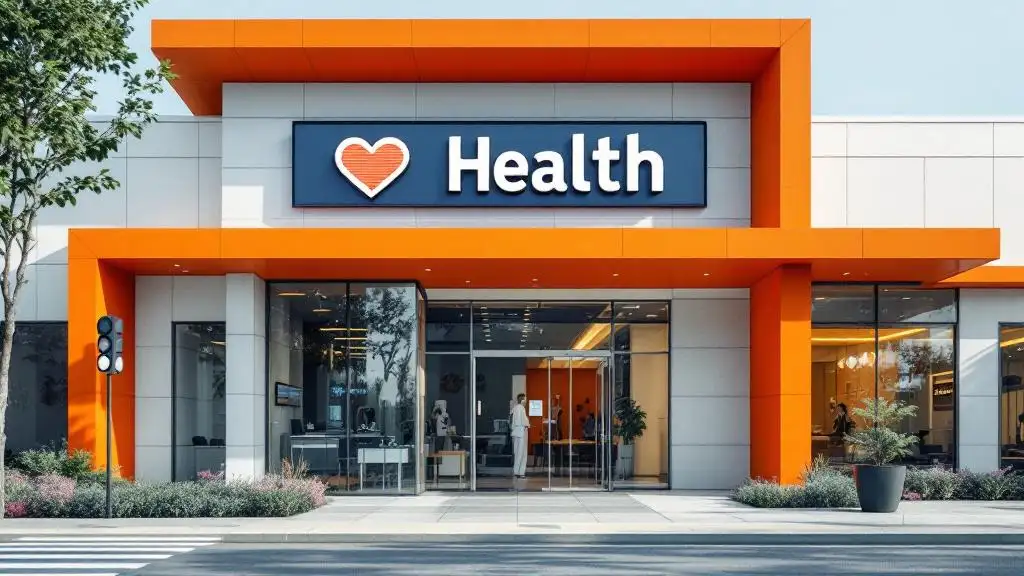2024 Healthcare Marketing Statistics
Digital ad spending in the healthcare industry has been on the rise, reflecting the increased importance of online marketing strategies.


2024 Healthcare Marketing Statistics
Healthcare Marketing Statistics Overview
To effectively navigate the ever-changing landscape of healthcare marketing, it's essential to stay informed about the latest statistics and trends. In this section, we will explore two important aspects of healthcare marketing statistics: digital ad spending trends and smartphone usage in healthcare research.
Digital Ad Spending Trends
Digital ad spending in the healthcare industry has been on the rise, reflecting the increased importance of online marketing strategies. In 2022, healthcare digital ad spending increased by 14.3% to reach $15.84 billion, and it is projected to increase by 12.3% in 2023, reaching $17.79 billion [1]. This significant investment demonstrates the recognition of the impact that digital advertising can have on healthcare marketing efforts.
Investing in digital ads allows healthcare providers to reach their target audience with precision, ensuring their message reaches the right people at the right time. By leveraging digital platforms, healthcare organizations can effectively promote their services, raise awareness, and attract new patients.
Smartphone Usage in Healthcare Research
Smartphones have become an integral part of our daily lives, and their impact on healthcare research is no exception. A staggering 58% of smartphone users have downloaded a health app, and 62% have used their smartphones to research a health condition [1]. These statistics highlight the growing reliance on smartphones as a primary source of health-related information.
Moreover, smartphones play a crucial role in patient-provider communication. Approximately 85% of patients use their smartphones to contact their healthcare providers, demonstrating the importance of mobile accessibility for effective healthcare delivery.
These statistics emphasize the need for healthcare providers to optimize their digital presence for mobile users. Ensuring that websites are mobile-friendly, providing relevant health information through apps, and utilizing mobile communication channels can enhance patient engagement and improve overall healthcare experiences.
By understanding and leveraging these healthcare marketing statistics, organizations can develop effective strategies to connect with their target audience, enhance patient experiences, and stay ahead in the ever-evolving digital landscape.
Strategies for Effective Healthcare Marketing
To successfully navigate the competitive landscape of healthcare marketing, healthcare providers need to adopt effective strategies that resonate with their target audience. Here are three key strategies that can drive success in healthcare marketing: the importance of reviews, high-quality content and local SEO, and personalization and omnichannel experiences.
Importance of Reviews
Reviews play a significant role in healthcare marketing, providing an outlet for current patients to advocate for healthcare services and develop trust with potential patients [1]. Positive reviews and testimonials can greatly influence the decision-making process of potential patients, helping them feel more confident about choosing a healthcare provider. Encouraging satisfied patients to leave reviews on platforms like Google, Yelp, or healthcare-specific review sites can help build a positive online reputation for the provider. Responding to both positive and negative reviews in a timely and professional manner also showcases a commitment to patient satisfaction and can enhance the provider's credibility.
High-Quality Content and Local SEO
In the digital age, high-quality content is a powerful strategy for healthcare providers to attract and engage their target audience. Sharing informative and patient-centric content through various channels, such as websites, blogs, and social media, can establish the provider as a trusted source of healthcare information. Content should be tailored to address the specific needs and concerns of the target audience, offering valuable insights and solutions.
To maximize the reach of content, healthcare providers should invest in local SEO strategies. Optimizing website content with relevant local keywords, ensuring accurate business listings on online directories, and leveraging location-specific landing pages can improve the provider's visibility in local search results. This is especially important for attracting patients from a specific geographic area.
Personalization and Omnichannel Experiences
Personalization and omnichannel experiences are increasingly vital in healthcare marketing. Patients expect seamless experiences across their entire healthcare journey, and providers must embrace personalization to meet these demands. According to research, 83% of consumers require a positive experience to remain loyal to a brand, and 82% would switch providers due to a bad experience [1]. Healthcare providers should leverage technology and data to tailor communications, recommendations, and interactions based on individual patient preferences, demographics, and behaviors.
Embracing an omnichannel approach allows healthcare providers to engage patients across multiple touchpoints, such as websites, social media platforms, email, and mobile apps. By delivering consistent messaging and experiences across these channels, providers can build stronger relationships with patients and enhance their overall satisfaction and loyalty.
By implementing these strategies, healthcare providers can effectively connect with their target audience, establish credibility, and build lasting relationships. It's important to continually evaluate the results of these strategies, adapt to evolving patient needs, and stay ahead in the ever-changing landscape of healthcare marketing.
Technology Trends in Healthcare Marketing
Keeping up with the latest technology trends is crucial for effective healthcare marketing. In this section, we will explore three key technology trends that are shaping the healthcare industry and impacting marketing strategies: electronic health record (EHR) adoption, the impact of the aging population, and the demand for advanced technology.
Electronic Health Record Adoption
Over the past decade, electronic health record (EHR) adoption rates have significantly increased, reaching the high 80th percentile, thanks in part to the Meaningful Use program [3]. This widespread adoption has resulted in the healthcare industry having access to vast amounts of data. EHR systems allow healthcare providers to store, manage, and share patient information electronically, improving efficiency and patient care.
From a marketing perspective, EHR adoption provides an opportunity to leverage patient data for targeted and personalized marketing campaigns. By analyzing patient data, healthcare marketers can gain insights into patient demographics, preferences, and behaviors, allowing for more effective targeting and messaging.
Impact of Aging Population
By 2030, the number of older people is projected to outnumber children for the first time, leading to what is often referred to as the "Silver Tsunami". This demographic shift will significantly impact the healthcare industry, as an increasing number of individuals will require healthcare services. Technologies such as telehealth and preventive health technology are expected to play a crucial role in meeting the rising demand for healthcare services for this older population.
Healthcare marketers need to consider this demographic shift when developing marketing strategies. Targeting older individuals with relevant messaging and promoting technologies that cater to their needs can help healthcare providers effectively reach this growing segment of the population.
Demand for Advanced Technology
As millennials transition into middle age, they are expected to drive the demand for more advanced technology that allows them to access healthcare services conveniently and on their terms. Millennials have grown up in a digital era and are accustomed to technology that enables seamless experiences. They seek convenience, instant access to information, and personalized healthcare services.
To meet the expectations of millennial healthcare consumers, marketers should focus on leveraging advanced technology solutions. This includes offering mobile apps, telehealth services, online appointment scheduling, and personalized digital experiences. By providing these technological solutions, healthcare providers can attract and retain millennial patients.
The healthcare industry is experiencing a shift driven by technology advancements. Marketers must stay ahead of these trends to effectively reach their target audience. By embracing electronic health record adoption, understanding the impact of the aging population, and addressing the demand for advanced technology, healthcare marketers can position their organizations for success in a rapidly evolving digital landscape.
Digital Marketing Strategies for Healthcare Providers
In the ever-evolving landscape of healthcare marketing, utilizing effective digital strategies is essential for reaching and engaging with patients. Here are three key digital marketing strategies that healthcare providers can leverage to enhance their online presence and connect with their target audience.
SEO Expertise and Website Visibility
Implementing SEO expertise in healthcare practices can lead to increased website visibility, an improved patient user experience, and drive more organic traffic to the website [4]. By optimizing the website's content, structure, and keywords, healthcare providers can enhance their search engine rankings and attract patients who are actively searching for relevant healthcare services.
To improve website visibility, healthcare providers should focus on:
- Conducting keyword research to identify the terms and phrases potential patients are searching for.
- Optimizing website content, including metadata, headings, and page copy, with relevant keywords.
- Ensuring the website is mobile-friendly and optimized for a seamless user experience across different devices.
- Building quality backlinks from reputable sources to increase the website's authority and credibility.
- Monitoring and analyzing website analytics to make data-driven decisions for ongoing optimization efforts.
Social Media Marketing
Social media platforms offer a powerful way for healthcare providers to connect and engage with their target audience. Through strategic social media marketing, healthcare providers can build brand awareness, share valuable health information, and foster meaningful relationships with patients.
Some key benefits of social media marketing for healthcare providers include:
- Specific audience targeting: Platforms like Facebook allow for precise audience targeting, enabling healthcare providers to reach individuals who are most likely to benefit from their services.
- Direct communication: Social media facilitates direct communication between patients and healthcare professionals, enabling patients to ask questions, seek advice, and even schedule appointments [5]. This leads to improved patient satisfaction and engagement.
- Educational content: Social media platforms provide a space for healthcare providers to share educational content, raise awareness about medical conditions and treatments, and provide valuable health tips.
- Patient support and community building: Social media for healthcare has made accessing medical information easier than ever, allowing individuals to find support, seek answers to health-related queries, and learn about symptoms, remedies, and preventive measures through platforms like Facebook groups, health forums, and YouTube channels [5].
Pay-Per-Click Advertising
Pay-Per-Click (PPC) advertising offers healthcare providers opportunities to secure quality traffic and grow potential leads. Through PPC campaigns, healthcare providers can display targeted ads on search engines and other platforms, reaching individuals who are actively seeking healthcare services.
Key advantages of PPC advertising for healthcare providers include:
- Targeted reach: PPC campaigns allow healthcare providers to target specific keywords, demographics, and locations, ensuring their ads are shown to the most relevant audience.
- Measurable results: PPC platforms provide detailed analytics and reporting, allowing healthcare providers to monitor the performance of their ads and gain insights into effective strategies.
- Cost control: With PPC advertising, healthcare providers have control over their advertising budget. They only pay for clicks on their ads, ensuring that their marketing dollars are being used effectively.
When implementing PPC advertising, healthcare providers should:
- Conduct thorough keyword research to identify relevant and high-converting keywords.
- Create compelling ad copy that highlights the unique benefits of their services.
- Optimize landing pages to align with the ad content and provide a seamless user experience.
- Continuously monitor and analyze campaign performance to make data-driven adjustments and optimizations.
By leveraging SEO expertise, social media marketing, and PPC advertising, healthcare providers can enhance their digital marketing efforts, reach their target audience effectively, and achieve their marketing goals.
Key Metrics for Healthcare Marketing Success
To gauge the success of healthcare marketing campaigns, several key metrics need to be considered. These metrics provide valuable insights into the effectiveness of marketing efforts and help organizations make data-driven decisions. Here are three important metrics for measuring healthcare marketing success:
Patient Acquisition Cost
Patient acquisition cost is a critical metric that measures the average cost incurred by an organization to acquire a new patient. This metric takes into account all sales and marketing expenses and is calculated by dividing the total cost by the number of new patients generated within a specific period. By tracking patient acquisition cost, healthcare organizations can evaluate the efficiency of their marketing campaigns and optimize their strategies for maximum return on investment.
Marketing Originated and Influenced Patients
Marketing originated patients are those who become new patients as a direct result of marketing efforts. This metric provides insights into the effectiveness of specific marketing programs and helps evaluate the return on investment for various marketing channels such as banner ads, social media posts, or health risk assessments [6]. On the other hand, marketing influenced patients encompass all touchpoints a patient interacted with before scheduling an appointment. It helps understand the impact of marketing materials and tactics in advancing patients in their health journey [6]. Tracking these metrics allows organizations to assess the overall effectiveness of their marketing efforts and make informed decisions about resource allocation.
Patient Engagement and Actions
Patient engagement is a crucial metric in healthcare marketing that focuses on measuring the value delivered throughout the patient experience. Positive patient engagement indicates effective communication and positive brand associations, which can lead to favorable patient reviews and continued loyalty. Engagement can be measured through various tactics such as clicks on emails, blog views, and social media shares [6]. It's also essential to track meaningful actions patients take to advance in their health journey. By defining success metrics before launching a campaign, organizations can align content creation and engagement strategies with campaign objectives. These metrics should be viewed as continuous improvement tools and benchmarks rather than one-time snapshots [6].
Tracking and analyzing these key metrics allows healthcare organizations to gain valuable insights into the effectiveness of their marketing campaigns. By leveraging this data, organizations can optimize their strategies, improve patient acquisition, enhance patient engagement, and make informed decisions for future marketing initiatives.
Tools and Technologies for Healthcare Marketing
In the fast-paced world of healthcare marketing, utilizing the right tools and technologies is crucial for success. These tools help healthcare providers track website metrics, monitor search engine rankings, and measure return on investment (ROI). Let's explore three key tools and technologies that can empower healthcare marketing efforts.
Tracking Website Metrics
Tracking website metrics is essential for understanding the performance and effectiveness of healthcare marketing strategies. Tools like Google Analytics provide valuable insights into website traffic, user behavior, and conversion rates. By analyzing these metrics, healthcare providers can identify areas for improvement, optimize their marketing campaigns, and enhance the overall user experience.
Some key website metrics to track include:

By regularly monitoring these metrics and making data-driven decisions, healthcare providers can optimize their website and marketing strategies to better serve their target audience.
Search Engine Ranking Tools
In the competitive world of healthcare marketing, achieving high rankings on search engine results pages (SERPs) is crucial for visibility and attracting potential patients. Tools like Google Search Console and SEMrush help healthcare providers track their search engine rankings, compare their positions with competitors, and adjust their strategies accordingly.
These tools provide valuable insights into keyword rankings, organic search traffic, and opportunities for improvement. By monitoring their search engine rankings, healthcare providers can identify keywords that are driving traffic to their website and optimize their content to improve visibility and attract more patients.
Measuring Return on Investment
Measuring the return on investment (ROI) of healthcare marketing campaigns is essential for making informed decisions about resource allocation and fine-tuning marketing strategies. By accurately measuring ROI, healthcare providers can determine the effectiveness of their marketing efforts and optimize their campaigns for maximum impact.
Tools such as Google Analytics, marketing automation platforms, and customer relationship management (CRM) systems can help track key metrics related to patient acquisition, marketing originated and influenced patients, and patient engagement. These tools provide insights into the effectiveness of different marketing channels, allowing healthcare providers to allocate resources to the most successful strategies.
Measuring ROI also involves tracking the cost of acquiring new patients and evaluating the revenue generated from marketing campaigns. By analyzing these metrics, healthcare providers can make data-driven decisions, optimize their marketing budget, and ensure a positive return on investment.
By leveraging these tools and technologies, healthcare providers can enhance their marketing strategies, track their performance, and make data-driven decisions for maximum effectiveness. With the right tools in hand, healthcare organizations can navigate the complex world of marketing and achieve their goals of reaching and engaging with their target audience.
References
[1]: https://www.invoca.com/blog/healthcare-trends-call-tracking
[2]: https://www.linkedin.com/pulse/leveraging-digital-marketing-healthcare-16-strategies-success-zkvkc/
[3]: https://www.clarityqst.com/blog/health-tech-market-trends/
[4]: https://www.forbes.com/sites/forbescommunicationscouncil/2023/03/03/how-digital-marketing-can-be-a-game-changer-for-healthcare-providers/
[5]: https://www.linkedin.com/pulse/powerful-impact-social-media-healthcare-digi-dotes
[6]: https://blog.wellsource.com/4-marketing-metrics-for-successful-healthcare-awareness-campaigns







